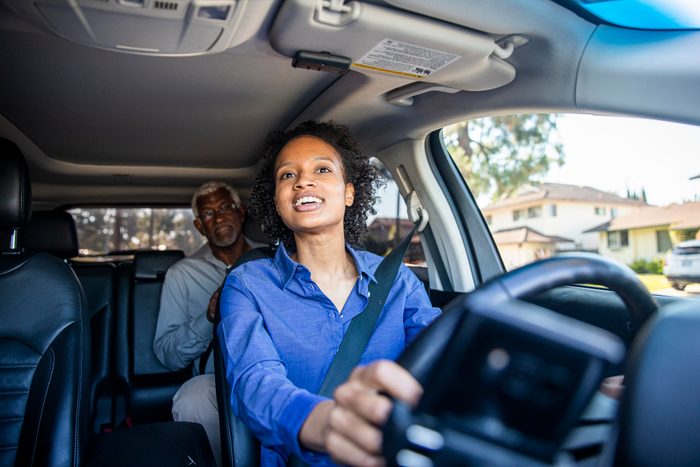
Uber etiquette all riders should know
Ubers are incredibly convenient, blending the best of public transport and private drivers, but they require mutual understanding and good Uber etiquette. Take Boston rideshare user Nanette Paddock’s recent experience: Her driver placed a strong air freshener by her seat, which she found unpleasant. Unsure of the etiquette rules, she first tried to ignore it because she didn’t want to bother him or make him feel bad. Several minutes into the ride, she finally spoke up, politely asking him to remove it. While the driver complied, he mentioned he’d have preferred an earlier heads-up. Both ended up feeling awkward despite good intentions.
This situation highlights a common issue, says Valerie Sokolosky, an etiquette expert and the author of the comprehensive etiquette guide Do It Right! “Drivers and riders, we’re all trying to do our best and be polite, but it doesn’t always come across as we intend,” she says. So to help you avoid common etiquette mistakes and earn a five-star rating, Reader’s Digest gathered tips from Sokolosky and various platinum- and gold-level Uber drivers.
Are you an expert Uber rider? Read on for essential Uber etiquette tips and find out!
Get Reader’s Digest’s Read Up newsletter for more etiquette tips, humor, cleaning, travel, tech and fun facts all week long.
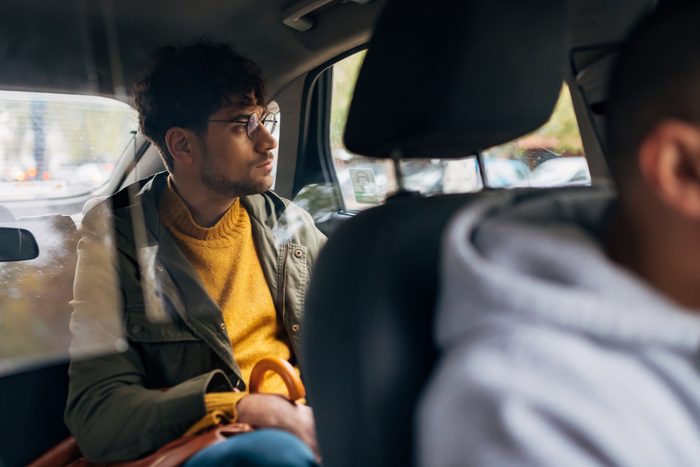
Suffering in silence
Paddock’s silence is a prime example of the top “polite” habit that Uber drivers say they don’t like: not speaking up when something is wrong. (Hint: This is one of the polite habits hotel workers also say they dislike.) “Our success depends on happy riders, and while I try to do everything I can to anticipate what people will want, it helps me a lot if they just tell me at the start of the ride if they need something or if something is bothering them,” says Kelly J. of Denver, who has been driving for the company since it first launched. “The worst is when people don’t say anything during the ride, when I could have fixed it, and instead complain on the app, give me a bad rating or don’t tip me.”
Do this instead: Politeness doesn’t dictate enduring discomfort, especially not during a service you’re paying for, says Sokolosky. Uber etiquette includes “sharing your concern, politely and accurately, as soon as you recognize the problem,” she says. This gives the driver time to remedy it.
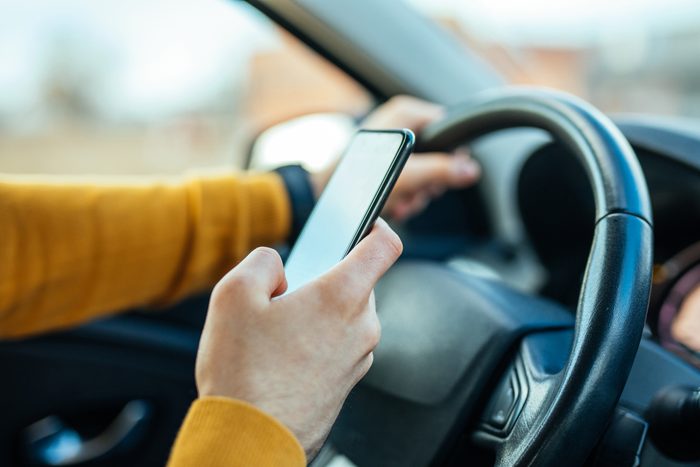
Calling or texting us directions to “help” us pick you up faster
Worried that your driver is running late because he or she can’t find where you are? You may think it will be helpful to call or text your driver to give them more detailed directions. “Pax [that’s Uber speak for ‘passengers’] can see where we are through the app at any time, and our GPS shows us the best route to get places, so there’s no need to give us that extra info, and we’re already coming as quickly as we can,” says Solomon T., a platinum-level driver in Austin, Texas.
In fact, he says that the texts and calls can actually slow down your ride, as rules state that drivers can take calls or respond to texts only while pulled over to the side of the road.
Do this instead: Practice Uber etiquette by keeping your “pin” (location marker) updated in the app, and then be patient. Instead of calling your driver to ask where he or she is, check the Uber app. “So many problems could be solved by people learning to use the app correctly and being patient,” says Solomon. Patience is one of the top etiquette rules for every situation, adds Sokolosky.
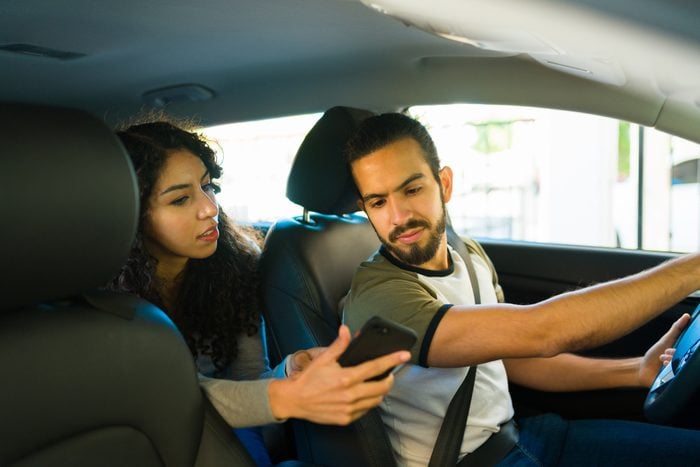
Giving us directions from the backseat
We get it: You know where you’re going, and you want to make the trip easier for your driver. But while you may think that giving directions to the destination will help your driver navigate the ride better, this generally isn’t useful, says Solomon. “GPS is the best these days. It accounts for construction, traffic and other things we can’t see,” he says. “So if I’m taking a different route than you think is the best, please know that the GPS probably knows better.” Sure, if a rider insists he take a particular route, he’ll do it, but it usually makes things less efficient.
Do this instead: Avoid making one of the most common travel mistakes. Instead, sit back and enjoy your ride, allowing your driver to do what he or she does best.
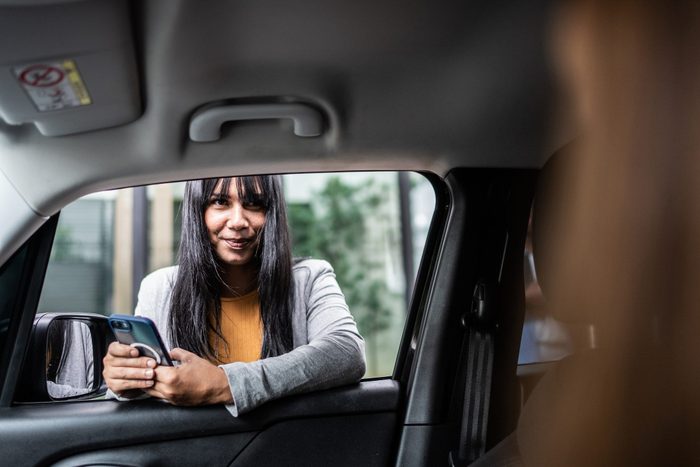
Extending your goodbye
Sometimes you really click with your driver, and the conversation is flowing and fun. It makes sense that, when you get to your destination, you may want to forego a simple thank-you and instead finish up the conversation or chat a bit longer. Isn’t showing interest in service workers the polite thing to do? Not exactly.
“We’re paid per ride, so even if I’m enjoying your company, it’s still in my best interest to get you out and on your way ASAP,” says Genevieve S., a gold-level Uber driver in San Francisco. “Sometimes I have people stand on the curb with one foot still inside the car and the door open, just chatting. I appreciate the friendliness, but really, you need to get out now.”
Do this instead: Thank your driver and promptly get out once you’re at your destination. “Service workers are nice to you because it’s part of their job, not because they want to be best friends,” says Sokolosky. By the way, too much chitchat is something grocery store workers dislike too.
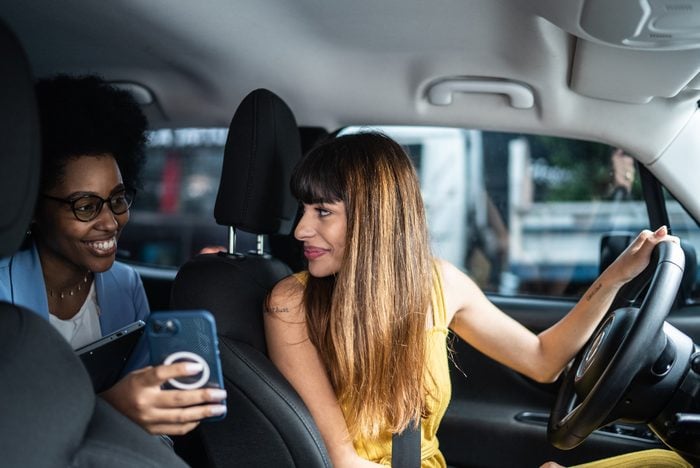
Tipping through the app while sitting in the car
You should always tip your Uber driver, despite it being an option. But speed is of the essence, and the more rides a driver can do in a specified time period, the more they can get paid. Sometimes Uber even gives out bonuses for completing a certain number of rides during peak times, like holiday travel. “Sometimes customers will sit in the car to close out the ride, rate the driver and tip—some people even like to hold up their phone to me so I can see the tip—and I do always really appreciate tips, but it takes up valuable time,” says Genevieve.
Do this instead: “I appreciate you even more when you close your tab after you get out of the car, not at the curb,” she says. Or follow tipping etiquette and hand cash directly to the driver for the tip, says Sokolosky.

Sitting in the front seat
While riders are no longer required to sit in the back seat, it’s still very much preferred. Insisting on riding shotgun may not seem like a big deal to you—in fact, it will make it easier to strike up a conversation with the driver, give directions and help out in any other way. Plus, sitting in the back may make the driver feel lonely or like they’re just a taxi driver and not a friend, right?
When it comes to Uber etiquette, this isn’t the case. “Actually, we are just your driver, and we’re not your friend,” says Kelly. “It drives me nuts when people sit in the front seat. Sometimes people say they do it to ‘keep me company,’ but I’m good, I promise.”
Do this instead: “Most people have a personal bubble, and you should respect that,” says Sokolosky, adding that the front seat is part of the driver’s personal space. Unless there is a specific need (like car sickness or a large number of passengers), always sit in the backseat. Besides, being a backseat rider is safer: If needed, you can exit the vehicle on either side to avoid moving traffic.
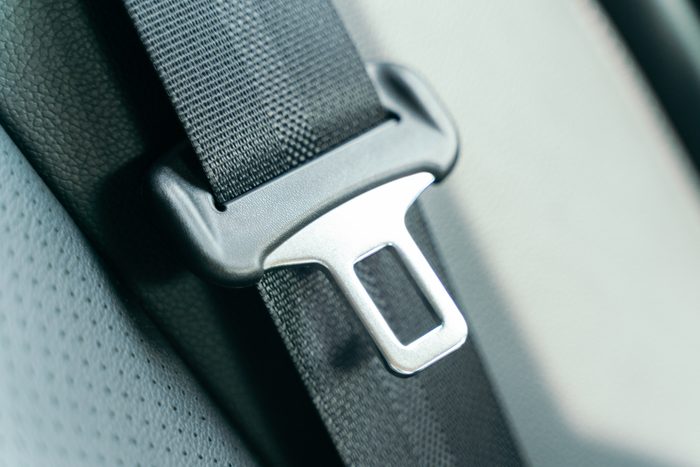
Not buckling up because you “trust” us
“Some people don’t like to wear seat belts, and they’ll say, ‘It’s cool, man, we trust you. We’re sure you’re a great driver.’ I appreciate the trust, but it doesn’t matter how great a driver I am if someone else runs a red light or drives drunk,” says Solomon. “It’s my job to get you to your destination safely, and the rules are ‘seat belts on.'”
Do this instead: Wear your seat belt for the entire ride—no arguments. “Never ask your driver to break rules for you,” says Sokolosky. “It jeopardizes your safety and their job.”
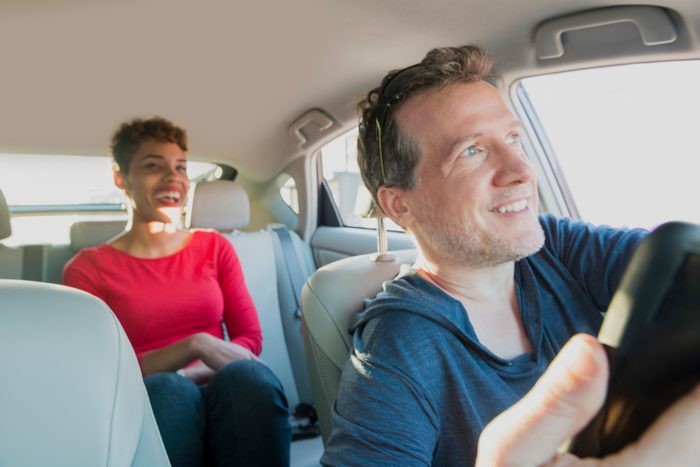
Confiding too much in us
“I find that people share so much information. I feel like I am a therapist sometimes,” says Kelly. “It is nice that they want to talk, but the things they say are TMI. Maybe they just need to vent, and they think they will never see me again so they might as well get things off their chest, but it makes me uncomfortable.”
Do this instead: Keep your private life private, says Sokolosky. It’s fine to make small talk with the driver (or not), but don’t share intimate details.
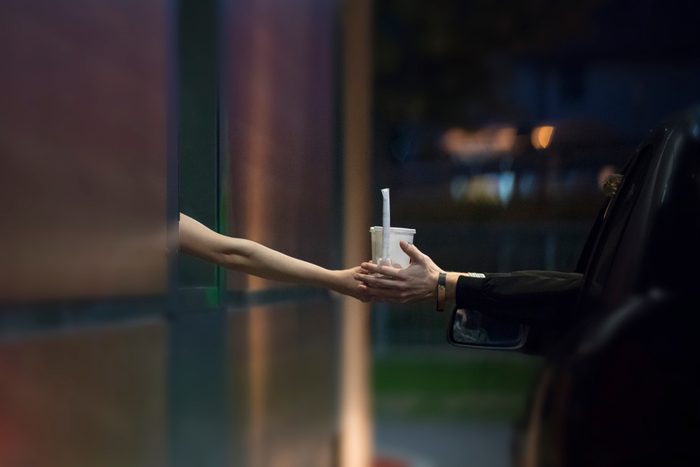
Offering to buy us a soda if we take you through a drive-thru
Many drivers have strong feelings about rides that entail multiple stops, especially those to restaurants or grocery stores, and some drivers won’t even accept those trips. The problem is that they don’t get paid to wait for you, and adding stops (especially mid-trip) can make them lose out on future fares. “Sometimes I get riders who know that it’s going to be a pain in my butt, so they’ll offer to buy me a sandwich or a Coke if I add a stop at a restaurant,” says Diego M., a gold-level driver in Washington, D.C. “As a dude who loves a Coke, I appreciate the offer, I really do, but that drink isn’t going to make up for that $100 trip I have next if your stop makes me miss it.”
Do this instead: It’s great that you’ve recognized that adding a stop is causing an inconvenience to the driver, and it’s nice of you to offer a little gift instead of just a halfhearted apology. But the polite thing to do is to avoid adding extra stops to your ride, says Sokolosky. If it’s really urgent, you can ask, but respect the driver’s answer—especially if the answer is “no,” adds Diego. If the driver does agree, add an extra-generous tip rather than buying them food.
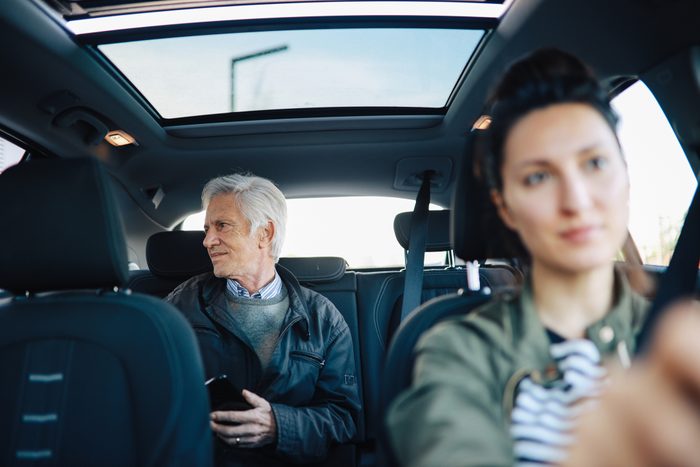
Sharing that you’re a current or former Uber driver
It can be fun to bond over a shared job experience, but what you may see as just swapping tales from your side hustle or offering friendly advice can feel like judgment, criticism or favor-seeking from the driver, says Diego. “Lots of these dudes will say it like now we’re buddies and then ask for a favor that, if they were a driver before, they should know not to ask,” he says. “Or they’ll offer me advice, which can be really outdated, depending on when they were driving. I always say ‘thank you’ because I know they think they’re being helpful, but it rarely is.”
Do this instead: It’s fine to say you used to drive a rideshare at one point and offer some empathy, but stop there, says Sokolosky. “Don’t offer people advice unless they ask for it,” she adds.
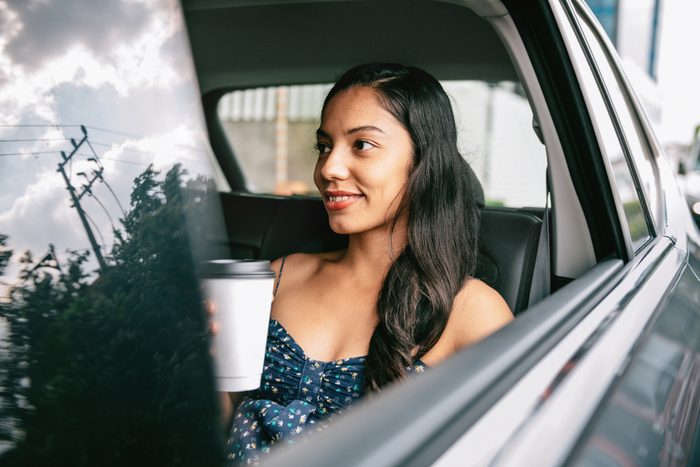
Asking our opinion about politics
Uber etiquette includes trying not to make your driver feel uncomfortable during the ride. And asking Uber drivers to settle arguments or validate your hot takes on controversial subjects are far from comfortable requests. Plus, Genevieve says it’s in the driver’s best interest to stay neutral. “I get that some people like to talk about that stuff, and they feel like it’s a compliment to ask my opinion, but I can’t risk getting into an argument or offending a rider,” she says. “This means I just end up nodding and agreeing with whatever you say.”
Do this instead: Feel free to have polite and reasonably quiet conversations about hot topics with your fellow riders (if you know them), but stick to small talk with your driver. And definitely don’t bring the driver into arguments, says Sokolosky.
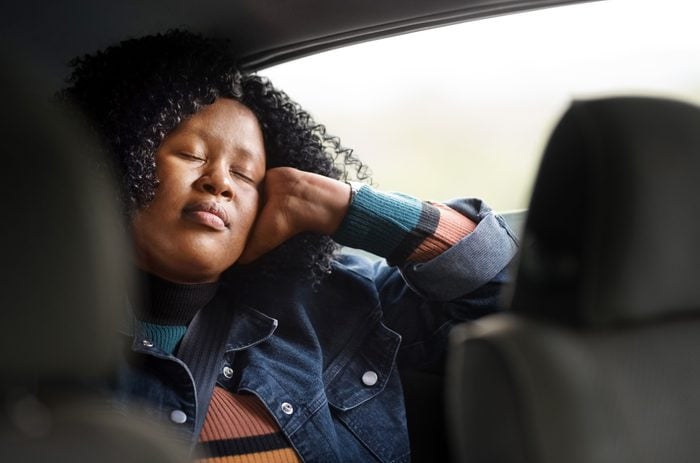
Getting a little too comfy
“I’ve had people tell me my car is so nice and so comfortable that they just feel at home in it … and then proceed to take their shoes off or brush their teeth or shave,” says Solomon. “It’s nice that they feel comfortable, but I don’t want them to be that comfortable!” In a similar vein, Genevieve says that people will make themselves comfortable by putting their dirty feet (with shoes on or off) on her armrest.
Do this instead: An Uber isn’t your car or home, so don’t treat it like it is, says Sokolosky. Pick up your trash, keep your shoes (and clothes) on and leave personal hygiene routines for the bathroom.
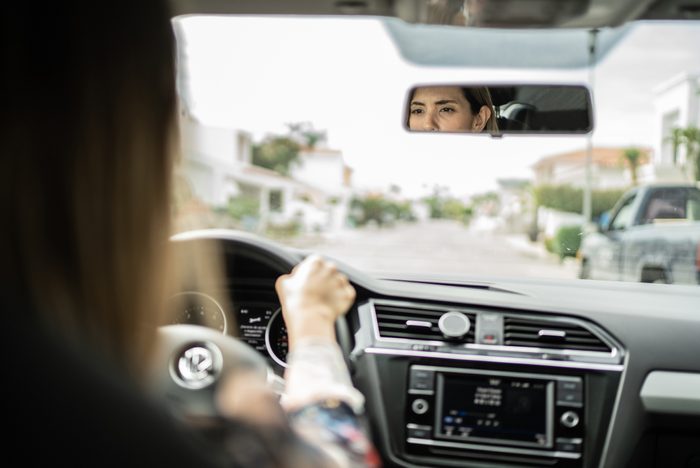
Expecting the driver to wait long for another rider
If your partner is held up or needs a few more minutes to get ready, you may feel like the polite thing to do is sit in the Uber and give the driver a heads-up that the other passenger is still coming. This lets the driver know you’re running late and gives your partner a little extra time, so it’s a win-win, right? This practice—sitting a person, child or sometimes luggage in the Uber to “hold it” for someone running late—is called anchoring, and all our Uber drivers said they really hate it.
Do this instead: While it is certainly nice to let your driver know if you’re a bit behind schedule (you can do this through the app), if you’re going to be more than a few minutes late, the polite thing to do is cancel the ride so they can move quickly to get another trip.
And while it may seem polite to hold the Uber for your friend or partner, that’s only supporting their habit of lateness, adds Sokolosky. Help them break the bad habit by encouraging them to meet the Uber when it arrives. What’s more, try not to be upset when a driver cancels. Instead, take note of Uber’s wait rule: UberX, UberXL, Pet and Assist rides have a five-minute wait time. Premium rides (Black and SUV) have 15 minutes, Comfort has 10 minutes and Shared rides have just two minutes.
About the experts
|
Why trust us
Reader’s Digest has published hundreds of etiquette stories that help readers navigate communication in a changing world. We regularly cover topics such as the best messages to send for any occasion, polite habits that aren’t as polite as they seem, email and texting etiquette, business etiquette, tipping etiquette, travel etiquette and more. We’re committed to producing high-quality content by writers with expertise and experience in their field in consultation with relevant, qualified experts. We rely on reputable primary sources, including government and professional organizations and academic institutions, as well as our writers’ personal experiences where appropriate. For this piece on Uber etiquette, Charlotte Hilton Andersen tapped her experience as a longtime journalist who specializes in etiquette and communication for Reader’s Digest. She also interviewed various professionals with expertise in this area, including etiquette expert Valerie Sokolosky and multiple platinum- and gold-level Uber drivers. We verify all facts and data, back them with credible sourcing and revisit them over time to ensure they remain accurate and up to date. Read more about our team, our contributors and our editorial policies.
Sources:
- Valerie Sokolosky, etiquette expert and author of Do It Right!
- Nanette Paddock, rideshare user in Boston
- Kelly J., platinum-level Uber driver in Denver
- Solomon T., platinum-level driver in Austin, Texas
- Genevieve S., gold-level driver in San Francisco
- Diego M., gold-level driver in Washington, D.C.
